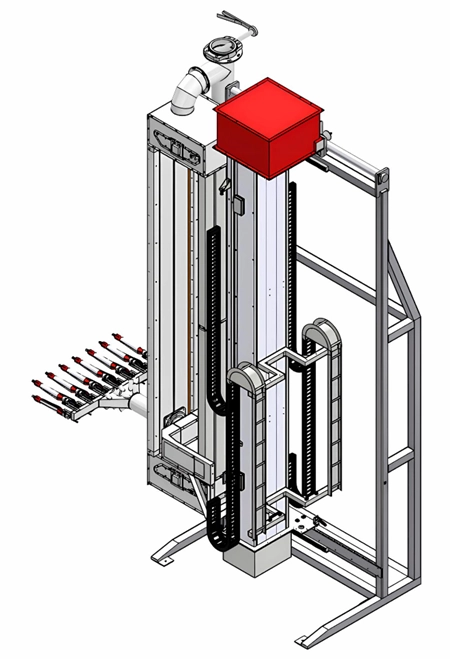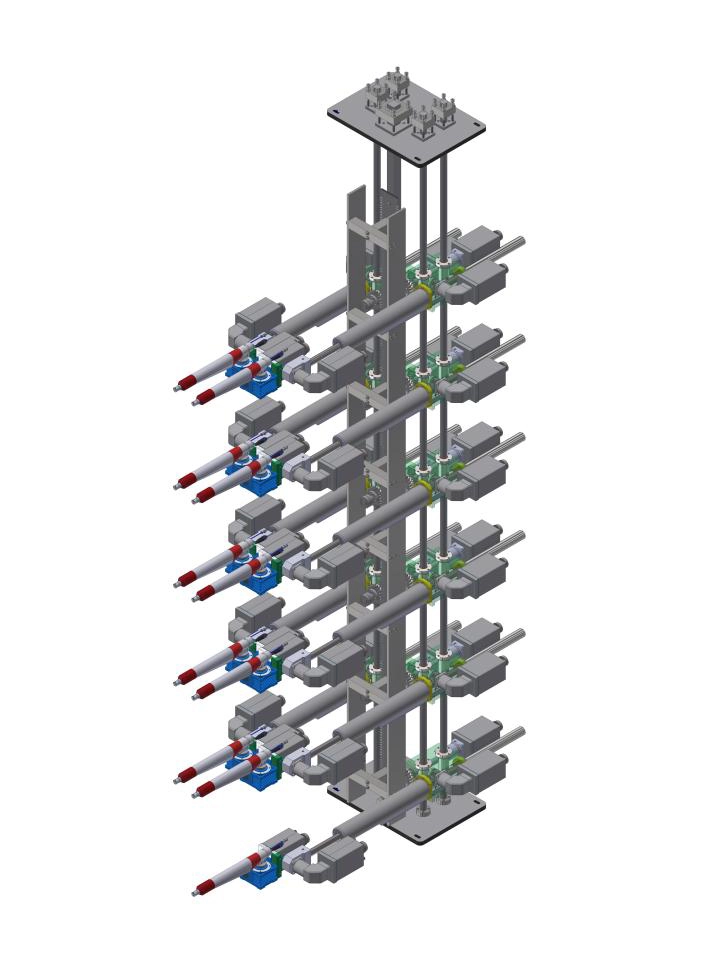Content Menu
● Understanding Electrostatic Spray Guns
>> What is an Electrostatic Spray Gun?
>> How Do These Guns Differ Between Entry-Level and Pro Models?
● Key Features and Functional Differences
>> Entry-Level Electrostatic Spray Guns
>>> Typical Features
>>> Advantages
>>> Disadvantages
>> Pro-Level Electrostatic Spray Guns
>>> Typical Features
>>> Advantages
>>> Disadvantages
● Performance and Application Comparison
>> Spray Quality and Coverage
>> Transfer Efficiency
>> Ergonomics and Handling
>> Maintenance and Durability
● Cost Considerations
>> Initial Investment
>> Consumables and Operating Costs
>> Training and Support
● When to Choose Entry-Level vs Pro Models
>> Situations Favoring Entry-Level Units
>> Situations Favoring Pro Models
● Additional Considerations
>> Safety Features
>> Environmental Impact
>> Industry-Specific Features
● Summary of Key Differences
● Frequently Asked Questions (FAQs)
● Conclusion
Electrostatic spray guns have revolutionized the way coatings are applied across many industries. From automotive painting to industrial coatings, these tools offer improved efficiency, better coverage, and higher transfer efficiency than traditional spray methods. However, not all electrostatic spray guns are created equal. Choosing between entry-level and professional (pro) models can be a significant decision based on cost, performance, ease of use, and intended applications.
This article provides an in-depth comparison of entry-level and pro electrostatic spray gun units, helping you understand how each type works, their features, advantages, disadvantages, and which might be best depending on your needs.

Understanding Electrostatic Spray Guns
What is an Electrostatic Spray Gun?
An electrostatic spray gun atomizes paint or coating material into tiny droplets while charging them with an electrical charge. The object being coated is grounded with an opposite charge, causing the charged particles to be attracted and adhere uniformly to the surface. This process significantly increases transfer efficiency, reduces overspray, and results in a smooth, even finish.
How Do These Guns Differ Between Entry-Level and Pro Models?
While the core technology remains consistent, entry-level and pro-level units vary in build quality, features, power output, and application flexibility. Understanding these differences is key to selecting the right tool.
Key Features and Functional Differences
Entry-Level Electrostatic Spray Guns
Entry-level models are typically designed for hobbyists, small workshops, or light industrial applications. These units focus on affordability and ease of use, often featuring simpler controls and reduced customization options.
Typical Features
- Lower Voltage Output: These units may operate at a lower kV range, adequate for small surface areas but limited in range for larger or complex shapes.
- Simplified Controls: Usually include a basic trigger and voltage adjustment knob but may lack fine control options.
- Lightweight Design: Often smaller and lighter, facilitating easier handling for beginners.
- Less Durable Materials: Entry units may have plastic components to keep costs down, potentially reducing longevity.
- Limited Nozzle Selection: Fewer spray tips or interchangeable parts compared to professional models.
Advantages
- Cost-Effective: Affordable price point makes electrostatic technology accessible.
- User Friendly: Designed with simplicity, reducing the learning curve.
- Suitable for Small Jobs: Excellent for light coating, touch-ups, or hobby projects.
Disadvantages
- Lower Transfer Efficiency: May not achieve the high transfer rates of pro models.
- Not Ideal for Large Scale Projects: Limited spray range and power.
- Durability Concerns: May require more frequent maintenance or replacement.
Pro-Level Electrostatic Spray Guns
Pro models cater to industrial users, professional painters, and large manufacturing operations. These units provide robust features for precision, efficiency, and durability.
Typical Features
- Higher Voltage and Current Output: Capable of charging particles more effectively, increasing adherence and reducing overspray.
- Advanced Controls: Features like adjustable voltage, atomization air pressure, multiple spray modes, and flow rate control.
- Interchangeable Nozzles: Variety of tips for different materials and spray patterns.
- Ergonomic Design: Constructed with durable materials, often including metal housings and advanced safety features.
- Integrated Monitoring: Some have digital displays or diagnostics to optimize performance.
Advantages
- Superior Finish Quality: Provides smoother, more consistent coatings.
- Higher Transfer Efficiency: Minimizes waste and overspray.
- Long-Term Reliability: Built to withstand frequent use in demanding environments.
- Versatile: Can handle a wide range of coatings including heavy-bodied paints and powders.
Disadvantages
- Higher Initial Cost: Significant investment compared to entry-level guns.
- More Complex Operation: Requires training or experience to maximize potential.
- Needs Maintenance: More components may require periodic servicing.
Performance and Application Comparison
Spray Quality and Coverage
Pro models deliver a more uniform spray pattern and finer atomization, resulting in a professional finish on automotive parts, industrial equipment, and furniture. Entry-level guns might produce an acceptable finish for casual projects but can suffer from uneven coatings or occasional runs.
Transfer Efficiency
Entry-level units generally see transfer efficiencies ranging from 50-65%. Pro spray guns can achieve efficiency rates above 80%, significantly reducing material usage and expenses, especially important in large scale operations.
Ergonomics and Handling
Entry-level units are lighter but may lack balance and comfort for extended usage. Pro guns often include ergonomic grips and optimized weight distribution designed to reduce operator fatigue during long shifts.
Maintenance and Durability
Pro guns use higher-grade components, leading to longer intervals between servicing and fewer breakdowns. Entry-level units can require more frequent servicing, especially if used intensively.
Cost Considerations
Initial Investment
Entry-level electrostatic spray guns typically cost a fraction of pro units. For small businesses or hobbyists, this lower upfront cost makes them attractive. Pro models, with their advanced features and build quality, command higher prices often justified by efficiency gains and reduced material wastage over time.
Consumables and Operating Costs
Pro models often use specialized nozzles and parts that might be costlier but last longer. Paint and materials savings from higher transfer efficiency can offset upfront costs. Entry-level units may incur costs from higher paint consumption due to overspray and lower efficiency.
Training and Support
Professional models sometimes come with manufacturer training, warranties, and customer support that can help optimize usage and reduce downtime. Entry-level tools provide less support but require minimal training.
When to Choose Entry-Level vs Pro Models
Situations Favoring Entry-Level Units
- Small or infrequent projects.
- Hobbyists or DIY users.
- Tight budgets and limited workspace.
- Projects with less stringent finish requirements.
Situations Favoring Pro Models
- Large volume or industrial-scale production.
- Projects requiring high-quality finishes.
- Frequently charged jobs necessitating reliability.
- Users trained in electrostatic spray technology.
- Applications involving heavy or varied coatings.
Additional Considerations
Safety Features
Both categories typically include grounding and insulation, but pro guns might have enhanced electrical safety features, emergency shutoffs, and compliance with industrial standards.
Environmental Impact
Due to higher transfer efficiency, pro units help reduce volatile organic compound (VOC) emissions by minimizing overspray. This can be key for adherence to strict environmental regulations.
Industry-Specific Features
Some pro models offer customization for automotive, aerospace, or food processing industries with specialized coatings and FDA-compliant materials, often absent in entry-level units.
Summary of Key Differences
| Feature | Entry-Level Unit | Pro Unit |
| Voltage Output | Lower | Higher |
| Control Complexity | Simple | Advanced |
| Durability | Moderate | High |
| Transfer Efficiency | Moderate (~50-65%) | High (>80%) |
| Price Range | Affordable | Expensive |
| Application Scale | Small to medium projects | Industrial/large scale |
| Nozzle Options | Limited | Extensive |
| Training Required | Low | Moderate to High |
Frequently Asked Questions (FAQs)
Q1: Can an entry-level electrostatic spray gun be upgraded with pro-level features?
A1: Generally, entry-level guns have limited modularity. While some can have upgraded nozzles or parts, the fundamental voltage and control limitations often prevent true pro-level performance upgrades.
Q2: Are electrostatic spray guns safe for indoor use?
A2: Yes, when properly grounded and used with adequate ventilation, electrostatic guns are safe indoors. However, always follow manufacturer safety guidelines and wear appropriate protective equipment.
Q3: How important is cleaning and maintenance for these spray guns?
A3: Very important. Proper cleaning prevents clogging and maintains consistent performance. Pro units require regular servicing, while entry-level units should be cleaned thoroughly after each use.
Q4: What type of coatings can electrostatic spray guns apply?
A4: They can apply various coatings including paints, primers, varnishes, powders, and special functional coatings, depending on the model and nozzle compatibility.
Q5: Do entry-level spray guns use the same charging technology as pro guns?
A5: Yes, the basic electrostatic charging principle is the same, but pro guns typically have more powerful and precise charging mechanisms to improve efficiency.

Conclusion
Choosing between entry-level and pro electrostatic spray gun units depends largely on your needs, project scale, and budget. Entry-level models provide a cost-effective introduction to electrostatic spraying, suitable for small, low-demand applications. Pro models, while requiring a higher investment and training, offer superior performance, efficiency, durability, and finish quality essential for professional and industrial users.
Understanding the distinctions outlined above will help you make an informed purchase that aligns with your specific application, ensuring you gain the benefits of electrostatic technology, whether your goal is occasional DIY use or continuous professional production.
Hot Tags: China, Global, OEM, private label, manufacturers, factory, suppliers, manufacturing company










































 .
. 